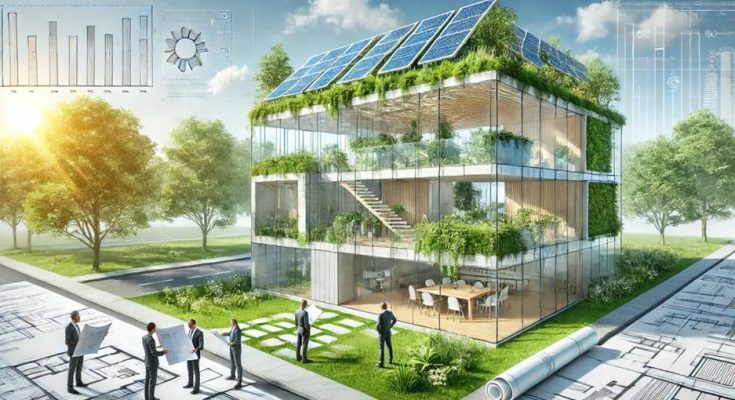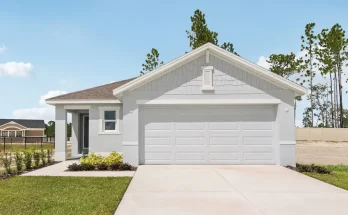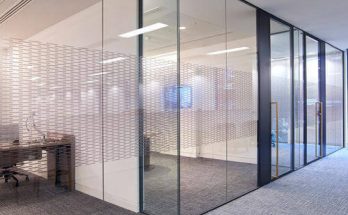In a time when sustainability and energy efficiency are more important than ever, energy modeling has become a crucial part of designing and managing modern buildings. Whether you’re an architect, property owner, sustainability consultant, or energy specialist, learning how to properly conduct energy modeling can greatly improve the performance, cost-efficiency, and environmental impact of your projects. This comprehensive guide will walk you through the key steps, benefits, and best practices of energy modeling so you can make smart, data-driven decisions.
What is Energy Modeling?
Energy modeling is a simulation technique used to predict how much energy a building will consume. By creating a virtual version of your building and analyzing multiple factors, you can estimate its energy usage, identify inefficiencies, and find ways to optimize performance. This proactive approach not only helps reduce energy costs but also supports global sustainability goals and regulatory compliance.
Energy Modeling Step 1: Gathering Data
Building Specifications
Begin by collecting complete architectural plans, details about building materials, and construction methods. These factors form the foundation of your model and play a major role in how much energy the building will use.
Climate Data
It’s important to gather accurate weather data, including seasonal variations and local climate conditions. These external factors directly affect the building’s heating, cooling, and ventilation requirements.
Occupancy Details
Consider the number of people expected to use the building, along with their activities and schedules. Occupancy patterns greatly influence overall energy demand and system usage.
Energy Systems Information
Collect detailed specifications for systems like HVAC, lighting, and appliances. Accurate information about these systems ensures precise modeling and helps reveal areas that can be improved for efficiency.
Gathering complete and reliable data sets the foundation for a strong and accurate energy model.
Energy Modeling Step 2: Selecting a Software Tool
Compatibility
Choose software that works well with your existing tools and systems. This will make the modeling process smoother and minimize technical challenges.
Features
Look for software with capabilities such as 3D modeling, renewable energy integration, and detailed reporting options. These features improve the depth and precision of your analysis.
User-Friendliness
Software with an easy-to-use interface saves time and reduces frustration. A smooth user experience allows you to focus more on the results and less on the learning curve.
Support and Resources
Ensure the tool comes with support options like tutorials, customer service, and community forums. Having access to resources helps you resolve issues quickly and make the most of the tool’s features.
Energy Modeling Step 3: Develop the Energy Model
Input Data
Enter all collected information into the software. Accurate and detailed input is essential to producing trustworthy results.
Define Zones
Divide the building into thermal zones based on different areas and uses. Zoning allows you to analyze and manage energy consumption more precisely.
Set Parameters
Set details such as insulation levels, window types, and HVAC specifications. These parameters have a direct impact on performance and ensure the model matches real-world conditions.
Run Simulations
Run initial simulations to understand baseline energy usage. Use these early results to adjust and refine your model for better accuracy and performance.
Model development is an ongoing process. Continuous adjustments based on results and new data help improve accuracy and effectiveness.
Energy Modeling Step 4: Analyzing Results
Energy Consumption Patterns
Identify which parts of the building use the most energy. This helps you target specific areas for efficiency improvements.
Peak Load Analysis
Analyze peak energy demands and the reasons behind them. Understanding peak loads is key to optimizing system capacity and load management.
System Performance
Assess how well systems like HVAC and lighting are working. Pinpointing inefficiencies makes it easier to plan upgrades or adjustments.
Comparative Studies
Compare different design choices to see which ones deliver the best energy performance. These comparisons provide valuable insights for decision-making and justify investments in energy-efficient solutions.
Careful analysis of the results allows you to make informed decisions about how to improve your building’s energy performance.
Energy Modeling Step 5: Iterative Improvements
Scenario Testing
Experiment with different scenarios, such as changing occupancy levels or varying climate conditions. Testing multiple scenarios ensures that your model remains accurate over time.
Optimization
Tweak various parameters to further improve energy efficiency. Continuous optimization leads to long-term savings and improved performance.
Validation
Once the building is operational, compare the model’s predictions with real-world energy usage. Validation confirms that the model accurately reflects actual performance.
Updates
Keep the model updated to reflect any changes to systems, occupancy, or building operations. Regular updates help maintain the accuracy and usefulness of the model.
The Importance of Energy Modeling
Environmental Impact
Energy modeling plays a key role in reducing carbon footprints and supporting sustainability efforts. By designing efficient buildings, you contribute to global efforts against climate change.
Cost Savings
Identifying and addressing inefficiencies can lead to significant financial savings. Lower energy bills and reduced operational costs benefit both building owners and occupants.
Compliance with Regulations
Energy modeling helps ensure that your building meets local and international efficiency standards. Compliance keeps your building competitive and helps you avoid costly penalties.
By applying the strategies in this guide, you can create reliable energy models that improve sustainability, reduce costs, and support informed decision-making.
Conclusion
Energy modeling is more than just a design tool — it’s a key part of building smarter, more efficient, and environmentally responsible structures. By following the proper steps, gathering accurate data, using the right software, analyzing results, and continually refining your model, you can significantly boost building performance and sustainability outcomes.
Beyond immediate savings and regulatory compliance, energy modeling sets the stage for a long-term commitment to responsible building design and operation. As technology advances and environmental expectations grow, adopting energy modeling today positions you for a future where efficiency and sustainability are essential. Whether you’re starting a new project or improving an existing one, mastering energy modeling is a powerful way to make your buildings better for people, the planet, and your bottom line.




